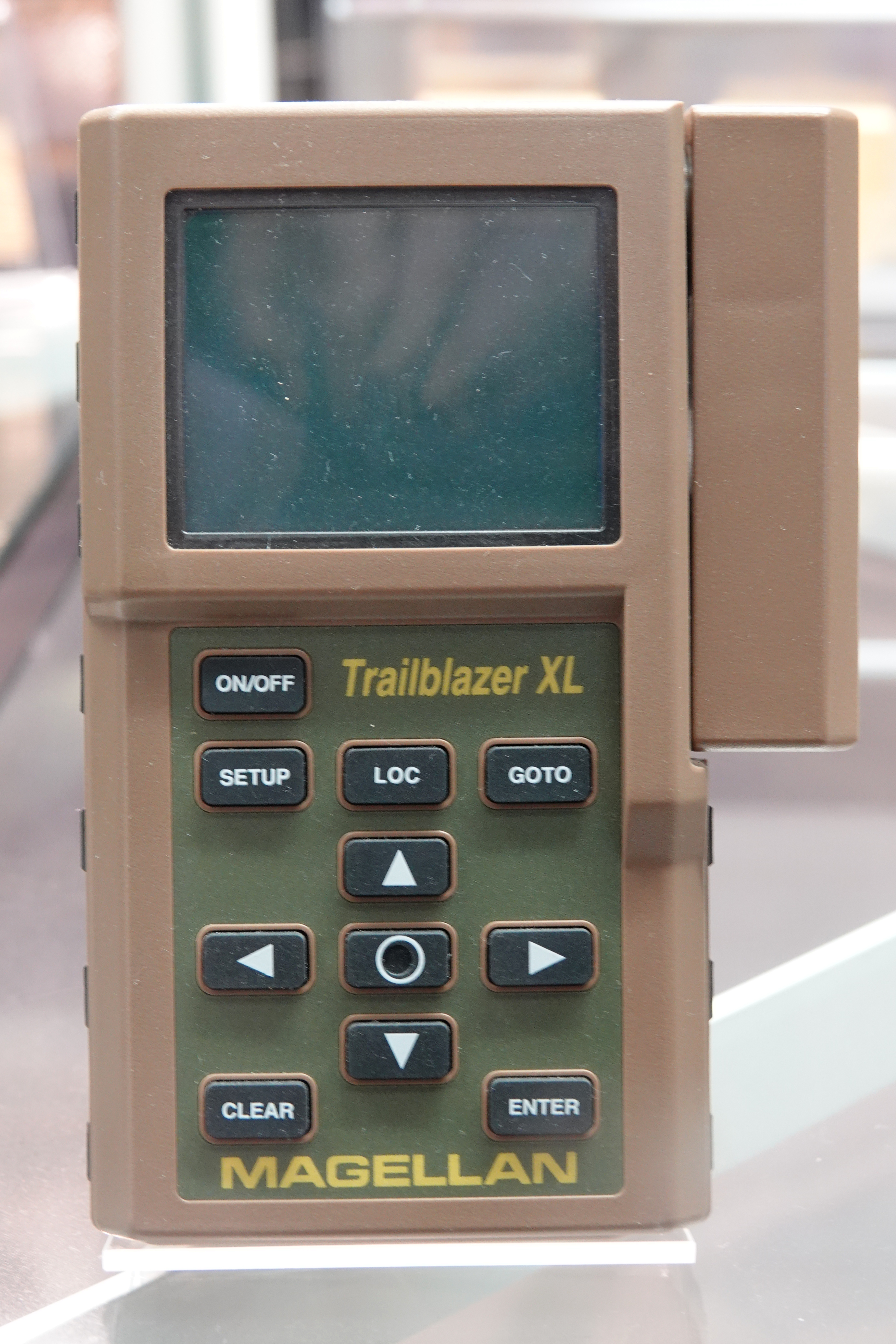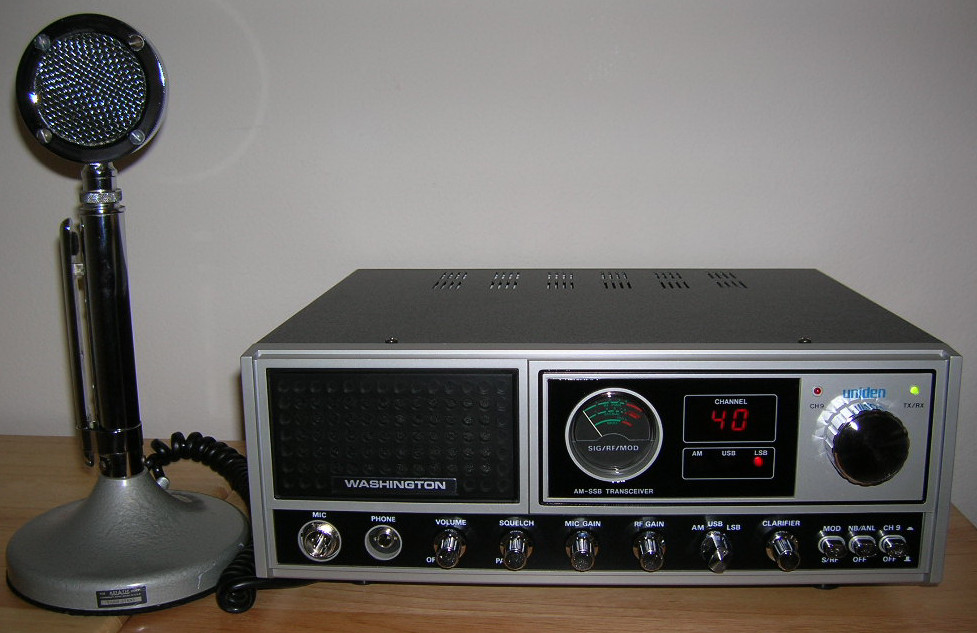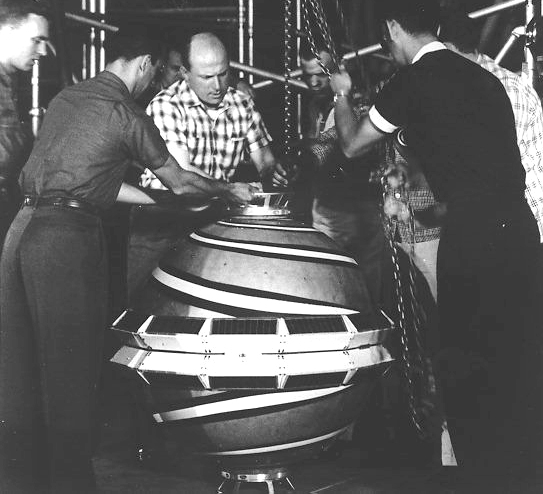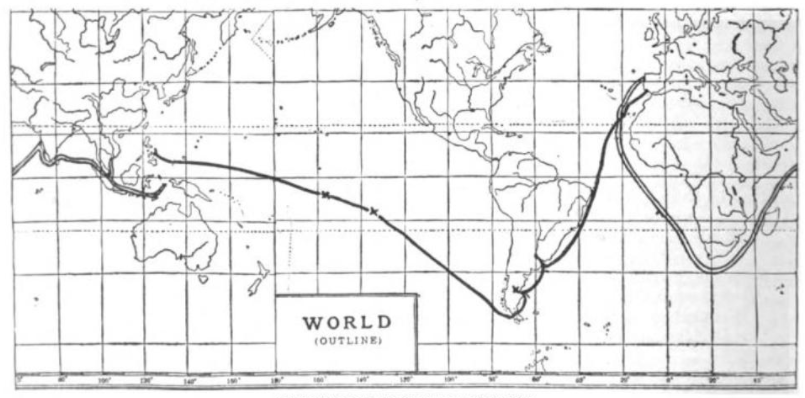|
Satnav
A satellite navigation (satnav) device or GPS device is a device that uses satellites of the Global Positioning System (GPS) or similar global navigation satellite systems (GNSS). A satnav device can determine the user's geographic coordinates and may display the geographical position on a map and offer routing directions (as in turn-by-turn navigation). , four GNSS systems are operational: the original United States' GPS, the European Union's Galileo, Russia's GLONASS, and China's BeiDou Navigation Satellite System. The Indian Regional Navigation Satellite System (IRNSS) will follow and Japan's Quasi-Zenith Satellite System ( QZSS) scheduled for 2023 will augment the accuracy of a number of GNSS. A satellite navigation device can retrieve location and time information from one or more GNSS systems in all weather conditions, anywhere on or near the Earth's surface. Satnav reception requires an unobstructed line of sight to four or more GNSS satellites, and is subject to po ... [...More Info...] [...Related Items...] OR: [Wikipedia] [Google] [Baidu] |
Galileo (satellite Navigation)
Galileo is a satellite navigation, global navigation satellite system (GNSS) created by the European Union through the European Space Agency (ESA) and operated by the European Union Agency for the Space Programme (EUSPA). It is headquartered in Prague, Czech Republic, Czechia, with two ground operations centres in Oberpfaffenhofen, Germany (mostly responsible for the control of the satellites), and in Fucine Lake, Fucino, Italy (mostly responsible for providing the navigation data). The €10 billion project began offering limited services in 2016. It is named after the Italian astronomer Galileo Galilei. One of the aims of Galileo is to provide an independent high-precision positioning system so European political and military authorities do not have to rely on the United States Global Positioning System, GPS or the Russian GLONASS systems, which could be disabled or degraded by their operators at any time. The use of basic (lower-precision) Galileo services is free and open ... [...More Info...] [...Related Items...] OR: [Wikipedia] [Google] [Baidu] |
Global Navigation Satellite Systems
A satellite navigation or satnav system is a system that uses satellites to provide autonomous geopositioning. A satellite navigation system with global coverage is termed global navigation satellite system (GNSS). , four global systems are operational: the United States's Global Positioning System (GPS), Russia's Global Navigation Satellite System (GLONASS), China's BeiDou Navigation Satellite System (BDS), and the European Union's Galileo. Two regional systems are operational: India's NavIC and Japan's QZSS. ''Satellite-based augmentation systems'' (SBAS), designed to enhance the accuracy of GNSS, include Japan's Quasi-Zenith Satellite System (QZSS), India's GAGAN and the European EGNOS, all of them based on GPS. Previous iterations of the BeiDou navigation system and the present Indian Regional Navigation Satellite System (IRNSS), operationally known as NavIC, are examples of stand-alone operating regional navigation satellite systems (RNSS). Satellite navigation devices ... [...More Info...] [...Related Items...] OR: [Wikipedia] [Google] [Baidu] |
Indian Regional Navigation Satellite System
Indian Regional Navigation Satellite System (IRNSS), with an operational name of NavIC (acronym for Navigation with Indian Constellation; also, 'sailor' or 'navigator' in Indian languages), is an autonomous regional satellite navigation system that provides accurate real-time positioning and timing services. It covers India and a region extending around it, with plans for further extension up to . An extended service area lies between the primary service area and a rectangle area enclosed by the 30th parallel south to the 50th parallel north and the 30th meridian east to the 130th meridian east, beyond borders where some of the NavIC satellites are visible but the position is not always computable with assured accuracy. The system currently consists of a constellation of eight satellites, with two additional satellites on ground as stand-by. The constellation is in orbit as of 2018. NavIC will provide two levels of service, the "standard positioning service", which will ... [...More Info...] [...Related Items...] OR: [Wikipedia] [Google] [Baidu] |
BeiDou
The BeiDou Navigation Satellite System (BDS; ) is a satellite-based radio navigation system owned and operated by the China National Space Administration. It provides geolocation and time information to a BDS receiver anywhere on or near the Earth where there is an unobstructed line of sight to four or more BDS satellites. It does not require the user to transmit any data and operates independently of any telephonic or Internet reception, though these technologies can enhance the usefulness of the BDS positioning information. The current service, BeiDou-3 (third-generation BeiDou), provides full global coverage for timing and navigation, along with Russia's GLONASS, the European Galileo, and the US's GPS. It consists of satellites in three different orbits, including 24 satellites in medium-circle orbits (covering the world), 3 satellites in inclined geosynchronous orbits (covering the Asia-Pacific region), and 3 satellites in geostationary orbits (covering China). The BeiDo ... [...More Info...] [...Related Items...] OR: [Wikipedia] [Google] [Baidu] |
Smartphone
A smartphone is a mobile phone with advanced computing capabilities. It typically has a touchscreen interface, allowing users to access a wide range of applications and services, such as web browsing, email, and social media, as well as multimedia playback and Streaming media, streaming. Smartphones have built-in cameras, GPS navigation, and support for various communication methods, including voice calls, text messaging, and internet-based messaging apps. Smartphones are distinguished from older-design feature phones by their more advanced hardware capabilities and extensive mobile operating systems, access to the internet, business applications, Mobile payment, mobile payments, and multimedia functionality, including music, video, mobile gaming, gaming, Internet radio, radio, and Mobile television, television. Smartphones typically feature MOSFET, metal–oxide–semiconductor (MOS) integrated circuit (IC) chips, various sensors, and support for multiple wireless communicati ... [...More Info...] [...Related Items...] OR: [Wikipedia] [Google] [Baidu] |
Garmin Nüvi 200
Garmin Ltd. is an American multinational technology company based in Olathe, Kansas. The company designs, develops, manufactures, markets, and distributes GPS-enabled products and other navigation, communication, sensor-based, and information products to the automotive, aviation, marine, outdoors, and sport markets. Garmin was founded in 1989 by Gary Burrell and Min Kao in Lenexa, Kansas. In 1996, the company established corporate headquarters in Olathe, Kansas. Since 2010, the company has been legally incorporated in Schaffhausen, Switzerland, with principal subsidiaries located in the United States, Taiwan, and the United Kingdom. As of 2024, the company has nearly 22,000 employees in 34 countries and generated US$6.3 billion in revenue. Garmin was initially associated with personal in-car navigation devices, but now offers several product lines across different markets, with an emphasis on smartwatch technology. In 2022, Garmin smartwatches represented the largest market s ... [...More Info...] [...Related Items...] OR: [Wikipedia] [Google] [Baidu] |
Base Station
Base station (or base radio station, BS) is – according to the International Telecommunication Union's (ITU) Radio Regulations (RR) – a " land station in the land mobile service." A base station is called '' node B'' in 3G, '' eNB'' in LTE ( 4G), and '' gNB'' in 5G. The term is used in the context of mobile telephony, wireless computer networking and other wireless communications and in land surveying. In surveying, it is a GPS receiver at a known position, while in wireless communications it is a transceiver connecting a number of other devices to one another and/or to a wider area. In mobile telephony, it provides the connection between mobile phones and the wider telephone network. In a computer network, it is a transceiver acting as a switch for computers in the network, possibly connecting them to a/another local area network and/or the Internet. In traditional wireless communications, it can refer to the hub of a dispatch fleet such as a taxi or delivery fl ... [...More Info...] [...Related Items...] OR: [Wikipedia] [Google] [Baidu] |
Cell Tower
A cell site, cell phone tower, cell base tower, or cellular base station is a cellular-enabled mobile device site where antennas and electronic communications equipment are placed (typically on a radio mast, tower, or other raised structure) to create a cell, or adjacent cells, in a cellular network. The raised structure typically supports antenna and one or more sets of transmitter/receivers transceivers, digital signal processors, control electronics, a GPS receiver for timing (for CDMA2000/IS-95 or GSM systems), primary and backup electrical power sources, and sheltering. Multiple cellular providers often save money by mounting their antennas on a common shared mast; since separate systems use different frequencies, antennas can be located close together without interfering with each other. Some provider companies operate multiple cellular networks and similarly use colocated base stations for two or more cellular networks, (CDMA2000 or GSM, for example). Cell sites are ... [...More Info...] [...Related Items...] OR: [Wikipedia] [Google] [Baidu] |
Transit (satellite)
The Transit system, also known as NAVSAT or NNSS (for ''Navy Navigation Satellite System''), was the first satellite navigation system to be used operationally. The radio navigation system was primarily used by the U.S. Navy to provide accurate location information to its UGM-27 Polaris, Polaris ballistic missile submarines, and it was also used as a navigation system by the Navy's surface ships, as well as for hydrographic survey and geodetic surveying. Transit provided continuous navigation satellite service from 1964, initially for Polaris submarines and later for civilian use as well. In the Project DAMP Program, the missile tracking ship USAS American Mariner also used data from the satellite for precise ship's location information prior to positioning its tracking radars. History The Transit satellite system, sponsored by the Navy and developed jointly by DARPA and the Johns Hopkins Applied Physics Laboratory, under the leadership of Dr. Richard Kershner at Johns Hop ... [...More Info...] [...Related Items...] OR: [Wikipedia] [Google] [Baidu] |
Cold War
The Cold War was a period of global Geopolitics, geopolitical rivalry between the United States (US) and the Soviet Union (USSR) and their respective allies, the capitalist Western Bloc and communist Eastern Bloc, which lasted from 1947 until the dissolution of the Soviet Union in 1991. The term ''Cold war (term), cold war'' is used because there was no direct fighting between the two superpowers, though each supported opposing sides in regional conflicts known as proxy wars. In addition to the struggle for ideological and economic influence and an arms race in both conventional and Nuclear arms race, nuclear weapons, the Cold War was expressed through technological rivalries such as the Space Race, espionage, propaganda campaigns, Economic sanctions, embargoes, and sports diplomacy. After the end of World War II in 1945, during which the US and USSR had been allies, the USSR installed satellite state, satellite governments in its occupied territories in Eastern Europe and N ... [...More Info...] [...Related Items...] OR: [Wikipedia] [Google] [Baidu] |
Magellan Trailblazer XL GPS Handheld Receiver
Ferdinand Magellan ( – 27 April 1521) was a Portuguese explorer best known for having planned and led the 1519–22 Spanish expedition to the East Indies. During this expedition, he also discovered the Strait of Magellan, allowing his fleet to pass from the Atlantic into the Pacific Ocean and perform the first European navigation to Asia via the Pacific. Magellan was killed in battle in the Philippines and his crew, commanded by the Spanish Juan Sebastián Elcano, completed the return trip to Spain in 1522 achieving the first circumnavigation of Earth in history. Born around 1480 into a family of minor Portuguese nobility, Magellan became a skilled sailor and naval officer in service of the Portuguese Crown in Asia. King Manuel I refused to support Magellan's plan to reach the Moluccas, or Spice Islands, by sailing westwards around the American continent. Magellan then proposed the same plan to King Charles I of Spain, who approved it. In Seville, he married, fathered ... [...More Info...] [...Related Items...] OR: [Wikipedia] [Google] [Baidu] |










